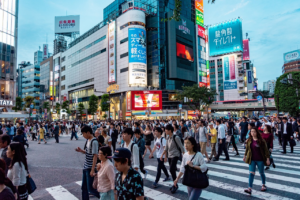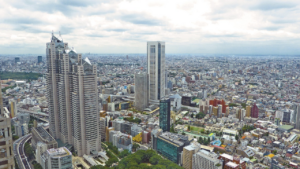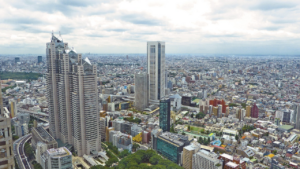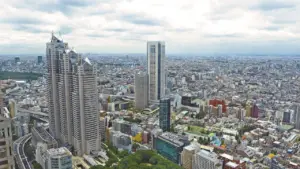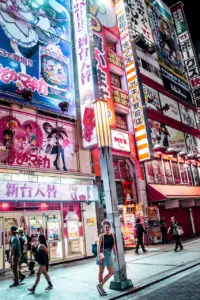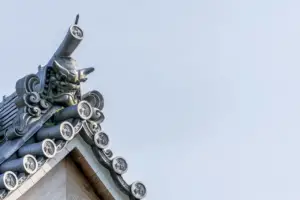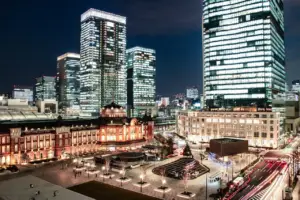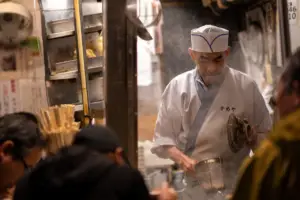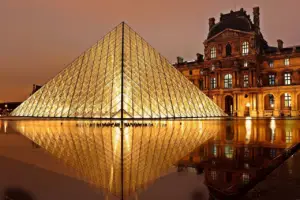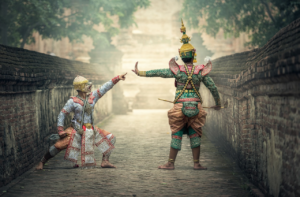Tokyo, the capital city of Japan, is a bustling metropolis that is known for its modernity and technological advancements. However, beneath the surface of this futuristic city lies a rich history that dates back centuries.
For history buffs, Tokyo is a treasure trove of historical sites, each offering a glimpse into Japan’s past and providing a unique cultural experience. In this article, we will explore six historical sites in Tokyo that are a must-visit for those interested in Japanese history.
First on the list is Senso-ji Temple, which is the oldest and most famous temple in Tokyo. Built in the 7th century, the temple has undergone numerous restorations over the centuries and is an excellent example of Japanese Buddhist architecture. The temple is also home to a bustling market street that sells traditional Japanese souvenirs and street food.
The Edo-Tokyo Museum, on the other hand, is a modern museum that showcases the history of Tokyo during the Edo period, which lasted from 1603 to 1868. The museum features life-sized replicas of traditional Japanese houses, artifacts from the era, and interactive exhibits that provide a comprehensive understanding of life in old Tokyo.
Key Takeaways
- Senso-ji Temple, Edo-Tokyo Museum, Imperial Palace, Tokyo National Museum, Meiji Shrine, and Asakusa district are the top historical sites to visit in Tokyo.
- Other historical sites in Japan include Kamishichiken, Ise Shrine, Kinkaku-ji, Himeji Castle, and Yasukuni Shrine.
- Visiting historical sites in Japan is a must-do for anyone interested in immersing themselves in Japan’s rich cultural heritage and gaining a deeper understanding of the country’s traditions and culture.
- Tokyo’s historical sites offer something for everyone, whether interested in religion, architecture, or social history.
Senso-ji Temple
Senso-ji Temple, a prominent Buddhist temple located in Tokyo’s Asakusa district, holds great significance as one of the city’s oldest and most revered religious sites, dating back to the 7th century.
The temple was founded after two fishermen discovered a statue of the bodhisattva Kannon in the nearby Sumida River.
The temple complex includes a five-story pagoda, a main hall, and a massive gate called the Kaminarimon, or ‘Thunder Gate,’which features a giant red lantern and two fearsome deities.
The temple has undergone several renovations and reconstructions over the centuries, but its traditional architecture and rich history remain intact.
Visitors can explore the various shrines and halls within the temple complex and witness traditional Buddhist rituals and ceremonies.
The surrounding Asakusa district also offers a taste of old Tokyo, with its narrow streets, traditional shops, and lively atmosphere.
Senso-ji Temple is a must-visit for anyone interested in Japanese history and culture.
Edo-Tokyo Museum
The Edo-Tokyo Museum offers a captivating insight into the city’s rich cultural and artistic heritage during the Edo period. Located in the Ryogoku district of Tokyo, the museum features a wide range of exhibits and artifacts that showcase the history and traditions of Tokyo from the 17th century to the present day.
The museum’s collection is divided into two main sections: the Edo Zone, which explores the city’s history during the Edo period (1603-1868); and the Tokyo Zone, which covers the city’s modern history from the Meiji period (1868-1912) to the present day.
Among the highlights of the museum’s collection are authentic reconstructions of Edo-era buildings, such as a kabuki theater and a traditional Japanese house, complete with furnishings and artifacts. Visitors can also explore exhibits on the history of Tokyo’s transportation systems, including rickshaws, trams, and modern trains.
The museum’s collection also includes a vast array of art and cultural artifacts, including ukiyo-e woodblock prints, samurai armor, and traditional costumes and textiles. Interactive exhibits allow visitors to experience Edo-period life, such as a replica of a merchant’s home and a recreated street scene.
Additionally, the museum has a collection of rare photographs and documents that offer a glimpse into the daily life and customs of Tokyo’s inhabitants during the Edo period. The Edo-Tokyo Museum is a must-visit destination for anyone interested in Tokyo’s rich cultural and historical heritage.
Imperial Palace
The Imperial Palace in Tokyo is a magnificent architectural masterpiece that is steeped in Japan’s rich imperial history. The palace is renowned for its stunning gardens and architectural design that are a testament to the country’s cultural value.
Visitors can take a guided tour of the palace grounds to learn more about its history and appreciate the beauty of its surroundings, making it an excellent destination for those interested in Japanese history and culture.
Learn About Japan’s Imperial History
Exploring Japan’s imperial history allows visitors to gain a deeper understanding of the country’s cultural and political evolution. The imperial history of Japan is a rich and complex subject that spans over a thousand years.
There are many historical sites in Tokyo that offer visitors the opportunity to learn about this fascinating period in Japanese history.
One such site is the Edo-Tokyo Museum, which traces the history of the city from its humble beginnings as a small fishing village to its rise as the political and cultural capital of Japan.
Another site is the Tokyo National Museum, which houses a vast collection of artifacts from Japan’s imperial past, including samurai armor, pottery, and calligraphy.
Finally, visitors can also explore the Meiji Shrine, which is dedicated to the Emperor Meiji and his wife, Empress Shoken. The shrine is a beautiful example of traditional Shinto architecture and offers visitors a peaceful respite from the bustling city.
See the Palace’s Stunning Architecture and Gardens
Marvel at the intricate architecture and vibrant gardens of the palace, immersing oneself in the grandeur of Japan’s regal heritage. The Imperial Palace, located in the heart of Tokyo, is a must-visit destination for history buffs. The palace was originally built in the late 19th century and has since undergone several renovations, with the most recent one completed in 1968. The palace is the residence of the Emperor of Japan and is surrounded by a moat and walls that are over 3 kilometers long.
The palace’s architecture is a blend of traditional Japanese and Western styles, with the main building featuring a mix of Japanese and European elements. The palace’s gardens are equally impressive, with a variety of trees, flowers, and ponds that create a serene and peaceful atmosphere. Visitors can take a stroll through the gardens and admire the beauty of the landscape, or participate in a guided tour to learn more about the history and significance of the palace. The Imperial Palace is a testament to Japan’s rich cultural heritage and is a must-visit destination for anyone interested in history and architecture.
| Column 1 | Column 2 | Column 3 |
|---|---|---|
| Location | Tokyo, Japan | |
| Built | Late 19th century | |
| Renovated | 1968 | |
| Style | Traditional Japanese and Western | |
| Features | Mix of Japanese and European elements | |
| Surroundings | Moat and walls over 3 kilometers long | |
| Gardens | Variety of trees, flowers, and ponds | |
| Significance | Residence of the Emperor of Japan | |
| Must-visit | Destination for history and architecture enthusiasts |
The table above provides a summary of the key features and significance of the Imperial Palace. It highlights the palace’s location, construction history, architectural style, and surroundings. The table also emphasizes the importance of the palace as the residence of the Emperor of Japan and as a must-visit destination for history and architecture enthusiasts. The use of a table in this section creates a rhythm and flow in the writing, making it easier for readers to absorb the information presented. Overall, the Imperial Palace is a remarkable historical site that showcases Japan’s rich cultural heritage and is a must-visit destination for anyone interested in history and architecture.
Take a Guided Tour of the Palace Grounds
One of the best ways to gain a deeper understanding of the Imperial Palace’s rich cultural heritage is to participate in a guided tour of the palace grounds. The palace grounds cover over 3.4 square kilometers and are surrounded by moats and walls that date back to the Edo period. The tour is led by knowledgeable guides who provide historical context and insight into the palace’s architecture, art, and culture.
During the tour, visitors can explore the Ninomaru Garden, which was once the residence of the shogun’s wife and is now a peaceful oasis of cherry blossom trees, ponds, and stone pathways.
The tour also includes a visit to the East Gardens, which is home to a variety of historical structures, such as the Otemon Gate, which was the main entrance to Edo Castle, and the Fujimi-yagura tower, which was used as a lookout point during times of war.
Finally, visitors can see the Imperial Palace itself, with its distinctive black and white walls and traditional Japanese architectural features.
Overall, a guided tour of the palace grounds provides an immersive and educational experience for history buffs and anyone interested in Japanese culture and history.
Meiji Shrine
Nestled amidst a lush forest in central Tokyo, Meiji Shrine is a tranquil retreat for those seeking to immerse themselves in the rich cultural history of Japan. The shrine was built in honor of Emperor Meiji and Empress Shoken, who played a significant role in modernizing Japan in the late 19th century. The shrine’s construction began in 1915 and was completed in 1920; however, it was destroyed during World War II and was later rebuilt in 1958.
Meiji Shrine is renowned for its traditional Japanese architecture and serene atmosphere. Visitors can explore the expansive grounds, which cover an area of 70 hectares, and admire the beautiful wooden structures, including the main hall, offering a glimpse into Japan’s past. The shrine also houses a treasure museum that showcases various artifacts and personal belongings of Emperor Meiji and Empress Shoken, such as their ceremonial robes, artwork, and calligraphy. Visitors can also participate in traditional Shinto rituals, such as writing wishes on ema (wooden plaques) and offering prayers at the main hall. Overall, Meiji Shrine is a must-visit destination for those who want to experience Japan’s rich cultural heritage and immerse themselves in the country’s fascinating history.
| Name | Description | Significance |
|---|---|---|
| Kamishichiken | The oldest geisha district in Kyoto | Provides a glimpse into traditional Japanese culture |
| Ise Shrine | A Shinto shrine dedicated to the sun goddess Amaterasu | One of the most important shrines in Japan |
| Kinkaku-ji | A Zen Buddhist temple with a golden pavilion | An iconic symbol of Japan’s cultural heritage |
| Himeji Castle | A feudal-era castle in Hyogo Prefecture | One of the most well-preserved castles in Japan |
The table above highlights other historical sites in Japan that are worth visiting for history buffs. These sites offer a glimpse into Japan’s rich cultural heritage, from the traditional geisha district of Kamishichiken to the iconic Kinkaku-ji temple with its golden pavilion. Himeji Castle, a well-preserved feudal-era castle, is also a must-visit destination for those interested in Japan’s past. Finally, the Ise Shrine, one of the most important shrines in Japan, is dedicated to the sun goddess Amaterasu and offers a unique insight into Shinto traditions. Overall, Japan is a country steeped in history, and visitors can explore its rich cultural heritage through these fascinating historical sites.
Yasukuni Shrine
The Yasukuni Shrine, located in Chiyoda Ward, is a controversial Shinto shrine that honors Japan’s war dead, including convicted war criminals from World War II.
It was established in 1869 to commemorate those who fought and died for Japan during the Meiji Restoration.
The shrine has become a source of controversy due to its inclusion of convicted war criminals, which has been seen as a symbol of Japan’s lack of remorse for its actions during World War II.
The Yasukuni Shrine attracts millions of visitors every year, including many right-wing politicians and nationalists who view it as a symbol of Japan’s military strength.
However, the shrine remains a divisive issue, with many in Japan and abroad seeing it as a symbol of Japan’s imperial past and aggressive militarism.
Despite the controversy surrounding the shrine, it remains an important aspect of Japan’s cultural heritage and continues to be a site of remembrance for those who gave their lives for Japan.
Tokyo National Museum
The Tokyo National Museum is a must-see destination for those who seek to explore Japan’s rich cultural heritage.
This museum houses an extensive collection of rare artifacts and artworks that showcase the country’s ancient history and traditions.
Visitors can experience an immersive journey through Japan’s past, from its prehistoric origins to its modern-day cultural achievements.
Explore Japan’s Rich Cultural Heritage
One can delve into Japan’s rich cultural heritage by exploring historical sites and monuments that showcase the country’s fascinating past. Japan boasts a long and rich history that spans over thousands of years, and its cultural heritage is a testament to this. From ancient Shinto shrines to medieval castles and museums, there are plenty of historical sites and monuments in Tokyo that offer insights into Japan’s past.
Firstly, the Senso-ji Temple is a must-visit for anyone interested in Japan’s cultural heritage. This ancient Buddhist temple is the oldest temple in Tokyo and dates back to the 7th century. With its vibrant red gate, towering pagoda, and beautiful gardens, the Senso-ji Temple is a fascinating glimpse into Japan’s religious and cultural history.
Secondly, the Edo-Tokyo Museum is another great destination for those interested in Japan’s past. The museum chronicles the history of Tokyo from its origins as a small fishing village to a bustling metropolis. With its interactive exhibits and life-size models, the Edo-Tokyo Museum is an excellent way to learn about the city’s rich history.
Thirdly, the Meiji Shrine is a beautiful Shinto shrine that honors Emperor Meiji and Empress Shoken. The shrine is set in a serene forest and is a great place to learn about Japan’s indigenous religion.
Lastly, the Tokyo Imperial Palace is a must-visit for history buffs. The palace was the residence of the Emperor of Japan until 1868 and is a stunning example of Japanese architecture.
See Rare Artifacts and Artworks
Visitors to Japan can immerse themselves in the country’s rich artistic heritage by viewing rare artifacts and artworks that offer a glimpse into Japan’s cultural past. One of the most significant museums in Tokyo is the Tokyo National Museum, which houses an extensive collection of Japanese art, including ceramics, textiles, and sculptures. The museum’s highlights include the world-renowned collection of Japanese swords, which spans over 1,000 years of Japanese history, and the "Tale of Genji"handscrolls, which are considered some of the most important works of Japanese literature. The museum also has a vast collection of Buddhist art, which includes sculptures, paintings, and calligraphy.
Another must-visit museum for history buffs is the Edo-Tokyo Museum, which focuses on the history and culture of Tokyo during the Edo period (1603-1868). The museum’s exhibits include life-size replicas of Edo-era buildings, such as Kabuki theaters and merchant houses, as well as artifacts and artworks from the period. Visitors can learn about the daily life of the people of Edo, including their food, clothing, and customs, and gain a deeper understanding of how Tokyo became the bustling metropolis it is today. Overall, these museums offer a unique opportunity for visitors to explore Japan’s rich cultural heritage and gain a deeper appreciation for the country’s history and artistic legacy.
| Artifacts/Artworks | Emotions Evoked |
|---|---|
| "Tale of Genji"handscrolls | Awe, appreciation for literature |
| Japanese swords collection | Fascination, admiration for craftsmanship |
| Edo-era replicas and artifacts | Fascination, appreciation for history |
Learn About the Country’s Ancient History and Traditions
Moving on from the exploration of rare artifacts and artworks, a visit to Tokyo can also be a great opportunity to learn about the country’s ancient history and traditions. Japan has a rich cultural heritage that spans thousands of years, and Tokyo is home to several historical sites that offer a glimpse into the country’s past.
One such site is the Sensoji Temple, a Buddhist temple in the Asakusa district that dates back to the 7th century. Visitors can admire the temple’s stunning architecture and learn about the rituals and traditions associated with Buddhism.
Another historical site worth visiting is the Edo-Tokyo Museum, which showcases the history and culture of Tokyo during the Edo period (1603-1868). Through exhibits that feature artifacts, models, and interactive displays, visitors can gain a deeper understanding of the city’s past and how it has evolved over time.
Other historical sites in Tokyo include the Imperial Palace, Meiji Shrine, and the Yasukuni Shrine, all of which offer unique insights into Japan’s rich cultural heritage.
Visiting these sites can be a fascinating experience for history buffs, as they provide a window into Japan’s past and offer a deeper understanding of the country’s traditions and culture. Whether you’re interested in religion, architecture, or social history, Tokyo’s historical sites offer something for everyone.
So, if you’re planning a trip to Tokyo, be sure to include these sites on your itinerary and immerse yourself in Japan’s rich cultural heritage.
Frequently Asked Questions
Are there any specific dress codes or rules to follow when visiting these historical sites?
When visiting historical sites in Tokyo, it is important to be mindful of any dress codes or rules that may apply. While specific requirements may vary depending on the site, it is generally recommended to dress modestly and conservatively, covering your shoulders and knees. This is particularly important when visiting religious or sacred sites, such as temples or shrines.
Additionally, visitors are expected to remove their shoes before entering certain areas, such as tatami rooms or traditional Japanese houses. It is also important to be respectful of the site and its history, refraining from any disruptive or disrespectful behavior. Visitors should follow any posted rules or regulations, and be mindful of any restrictions on photography or touching artifacts.
By being mindful of these guidelines, visitors can show respect for the site and its history, while ensuring an enjoyable and educational experience.
Can visitors take pictures inside the historical sites?
In general, visitors are allowed to take pictures inside historical sites in Tokyo. However, there are some restrictions depending on the specific site and the item being photographed.
For instance, flash photography may be prohibited in some areas or for certain artifacts. Additionally, some sites may have designated areas where photography is not allowed, such as sacred spaces or private rooms.
It is always recommended to check with the staff or signage at each site before taking photos, and to be respectful of any rules or restrictions in place. It is also important to remember that these historical sites are often delicate and irreplaceable, so visitors should take care not to touch or damage any artifacts while taking pictures.
What is the best time of day to visit these historical sites to avoid crowds?
The best time of day to visit historical sites in Tokyo in order to avoid crowds largely depends on the specific site in question.
Some sites, such as Sensoji Temple and Meiji Shrine, tend to have more visitors in the mornings and early afternoons, with crowds thinning out later in the day.
Others, such as the Edo-Tokyo Museum, may be less crowded during weekdays and in the late afternoons.
Additionally, it may be worth considering visiting some sites during off-peak seasons or on weekdays rather than weekends.
Overall, planning ahead and checking the specific hours of operation and peak visiting times for each site can help visitors avoid crowds and make the most of their historical sightseeing experience in Tokyo.
Is there any specific transportation to take to get to these historical sites?
To access the historical sites in Tokyo, visitors have various transportation options available to them. The most convenient mode of transportation in Tokyo is the subway system, which is affordable, efficient, and easy to navigate.
Additionally, visitors can also use buses or taxis to get to these sites. It is important to note that some of the sites may require a bit of walking from the nearest station, so comfortable shoes are recommended.
Visitors can also opt to take a guided tour or hire a private car service to explore these sites. Overall, visitors to Tokyo have a variety of transportation options to choose from to access the city’s historical sites, making it easy to plan a memorable and informative trip.
Are there any guided tours available for these historical sites?
There are several guided tours available for historical sites in Tokyo. These tours are usually led by knowledgeable and experienced guides who provide visitors with a detailed and informative experience. The tours can be booked online or through travel agencies and usually include transportation to and from the sites.
Some tours also include additional activities such as traditional Japanese tea ceremonies or visits to nearby museums. Visitors can choose from a variety of tours depending on their interests and preferences.
Guided tours are an excellent way to learn about the history and culture of Tokyo and make the most of a visit to the city’s historical sites.
Conclusion
Tokyo, the capital city of Japan, is a bustling metropolis that is a favorite among tourists. However, it also has a rich history that dates back to ancient times. For history buffs, there are several historical sites to visit that offer a glimpse into the city’s past.
Senso-ji Temple, located in the Asakusa district, is one of Tokyo’s oldest and most famous temples. The Edo-Tokyo Museum showcases the city’s history and culture during the Edo period. The Imperial Palace, located in the heart of Tokyo, is the residence of the Emperor of Japan and is surrounded by beautiful gardens.
Meiji Shrine, located in Shibuya, is a Shinto shrine dedicated to the deified spirits of Emperor Meiji and his wife, Empress Shoken. Yasukuni Shrine is a controversial Shinto shrine that honors Japan’s war dead, including war criminals. Finally, the Tokyo National Museum houses a vast collection of art and artifacts that showcases Japan’s history and culture.
In conclusion, Tokyo is a city that offers a unique blend of modernity and tradition. For history buffs, there are several historical sites to visit that offer a glimpse into the city’s past. From ancient temples to museums, Tokyo has something to offer to everyone who wants to explore and learn about the city’s rich history.
These sites not only provide a window into the past but also serve as a reminder of Japan’s cultural heritage and traditions that have been passed down through generations.






















